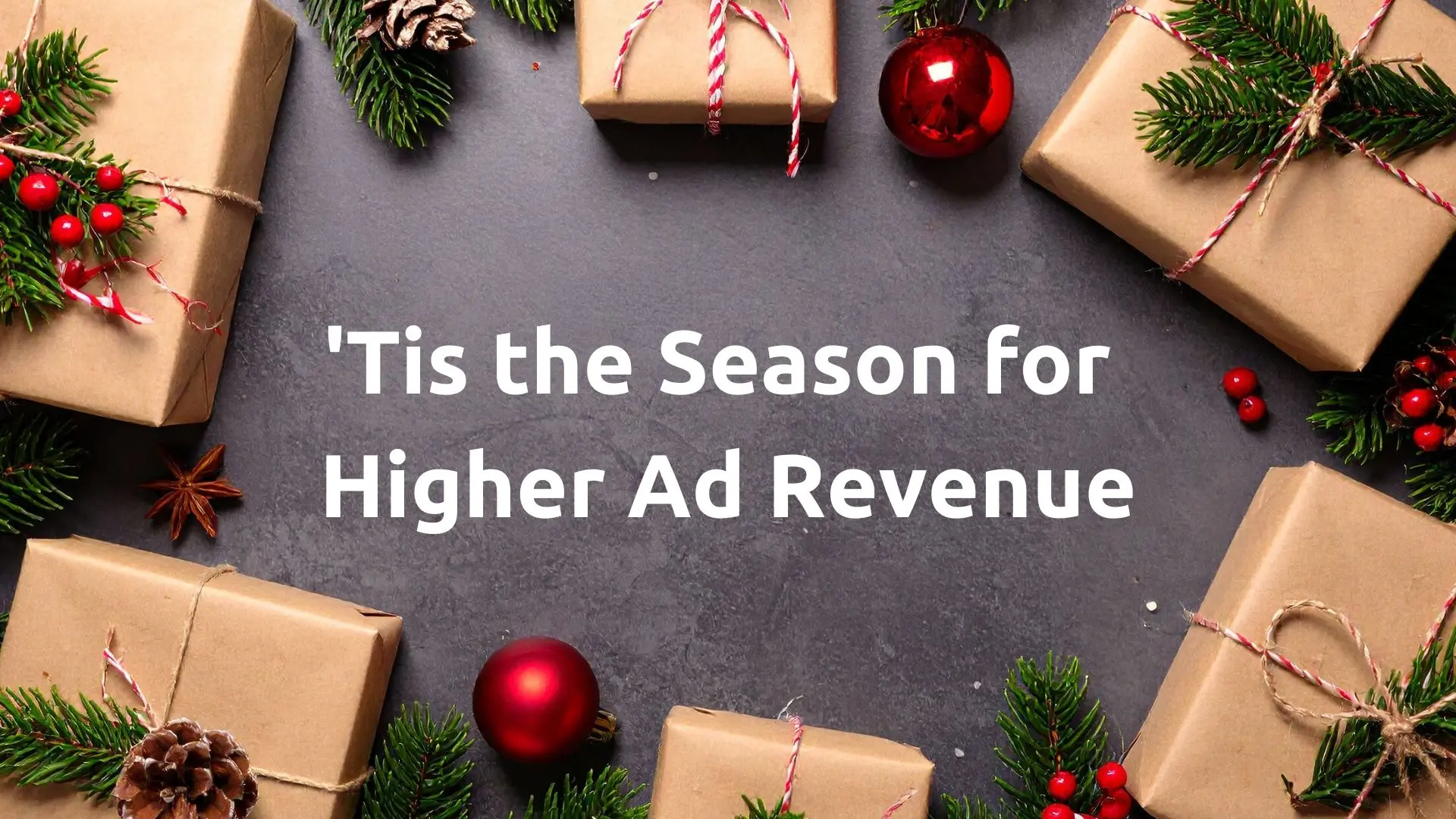The 2025 holiday season is shaping up to be one of the most compressed and complex in recent years. With Thanksgiving, Black Friday, and Cyber Monday landing unusually late – November 27 to December 1- nearly 40% of all planned holiday gift spending is set to occur within just five days.
Even more striking: by the end of Cyber Monday, almost 80% of holiday budgets will already be gone.
For publishers, this condensed period and the evolving consumer mindset present both challenges and untapped sources of revenue. The dynamics of holiday behavior are shifting and ad strategies must shift with them.
A Season Defined by Caution and Intention
Consumers remain committed to celebrating, giving, and gathering, but they are doing so more deliberately. While many say they expect to spend less this year, their actions show a more layered story: the hunt for value is intensifying, but emotional resonance still matters.
Gift cards, consumables, and shared experiences are gaining traction in categories that often align well with publisher audiences in lifestyle, food, travel, home, and entertainment. But the commonalities end there. Gen Z, baby boomers, and households with children are each making buying decisions for very different reasons, and their preferred content environments differ just as dramatically.
For publishers, this means context matters more than ever. Precision in how and when inventory is packaged directly translates into stronger fill rates and higher CPMs.
Why Publishers Need a Flexible Holiday Ad Strategy
Broad-brush, one-size-fits-all audience models no longer reflect real consumer behavior. As trends tighten, publishers that deliver flexible, high-intent placements will be best positioned to capture advertiser budgets.
The value proposition is clear: advertisers want to meet shoppers at the exact moment they’re browsing, researching, comparing, or ready to purchase. Publishers who provide granular audience segmentation become significantly more competitive in holiday RFPs.In an environment shaped by caution and complexity, publishers who offer: dynamic creative placements, precise audience targeting, transparent, self-serve buying paths will win more deals and create stronger recurring demand.
Why Timing Is Everything for Publishers
The holiday season runs on its own rhythm. Audience intent spikes in different waves, each representing a strategic opportunity for publishers:
- Early Inspiration – Consumers research, browse gift guides, compare prices. Ideal for: upper-funnel display, branded content, YouTube-scale inventory.
- Last-Minute Conversions – High urgency, high intent, rapid decision-making. Ideal for: premium direct deals, retargeting, fast-turn campaigns.
- Post-Holiday Surge (Q5) – A fast-growing “bonus quarter” driven by returns, gift card redemptions, and New Year’s goals. CPMs drop, but intent rises. Ideal for: performance-driven inventory, social discovery formats, mobile-heavy traffic.
According to market trends, 60% of shoppers start holiday research in October or later, with conversions peaking aggressively from Black Friday through Cyber Monday. Publishers who open inventory early and automate access avoid leaving budgets on the table.
The Rapid Rise of New Discovery Channels
Search behavior is changing and this has direct implications for publishers’ traffic and monetization strategies. Consumers, especially Gen Z, increasingly use TikTok, Instagram, YouTube, and AI chatbots for product discovery and research.
This shift places publishers in a unique position:
- TikTok and Instagram can funnel new traffic to publisher content when optimized with the right hooks.
- On-site ratings, reviews, and social proof significantly amplify conversions and advertiser performance.
- Publishers with short-form video, creator partnerships, or AI-enhanced search can position themselves as competitive discovery ecosystems.
Advertisers are watching these metrics closely. Publishers that integrate scalable video units, social-style placements, or AI-driven recommendations will align with how audiences are now exploring products and gift ideas.
How Publishers Should Package and Sell Holiday Inventory
What matters most to holiday shoppers: discounts, unique products, convenience, reviews, and peer validation. These behaviors can guide publishers on how to structure high-performing inventory packages.
Recommendations for publishers include:
- Gift Guide Takeovers: Lifestyle, tech, parenting, and travel publishers can command premium CPMs by anchoring advertiser integrations within editorial guides.
- Segmented Audience Bundles: Create packages tailored to “Gen Z researchers,” “parents,” “value-seeking shoppers,” or “experience-focused buyers.”
- Prime-Time Holiday Roadblocks: Offer fixed placements during Thanksgiving week, Black Friday weekend, and Cyber Monday – all peak periods for advertisers.
- Self-Serve Last-Minute Booking: Advertisers want agility; publishers who allow same-day campaign activation will capture incremental budgets.
- Q5 Performance Packages: Offer special pricing or conversion-focused formats from December 26 to mid-January when CPMs drop and intent spikes.
The publishers who match intent with inventory will see higher sell-through and repeat advertiser demand.
Q5: The Biggest Untapped Revenue Window for Publishers
Often overlooked, the week after Christmas has become one of the most powerful periods for performance advertising. CPMs drop on major platforms, but purchase intent, especially via mobile, surges due to returns and gift card usage.
This “5th quarter” is particularly lucrative for publishers that can supply:
- High-performing mobile placements
- Social-style video units
- Personalized content tied to New Year goals (health, organization, travel, finance, fashion)
- Retargeting-friendly traffic.
For many advertisers, Q5 is now outperforming Black Friday. Publishers who package it effectively will gain a major competitive edge.
What This Means for Publishers Going Into 2026
Across the holiday calendar, one theme stands out: precision wins. Consumers are buying more deliberately, and advertisers expect the same level of clarity and agility from their media partners.
Publishers that will succeed are those who:
- Offer audience segmentation
- Enable real-time activation through self-serve
- Invest in content that matches shifting intent
- Optimize for social and AI-driven discovery
- Give Q5 the same attention and investment as Q4.
In a season defined by urgency, complexity, and highly intentional spending, publishers who adapt quickly and offer tools that match this pace will capture more revenue, forge deeper advertiser relationships, and set the foundation for a strong 2026.
